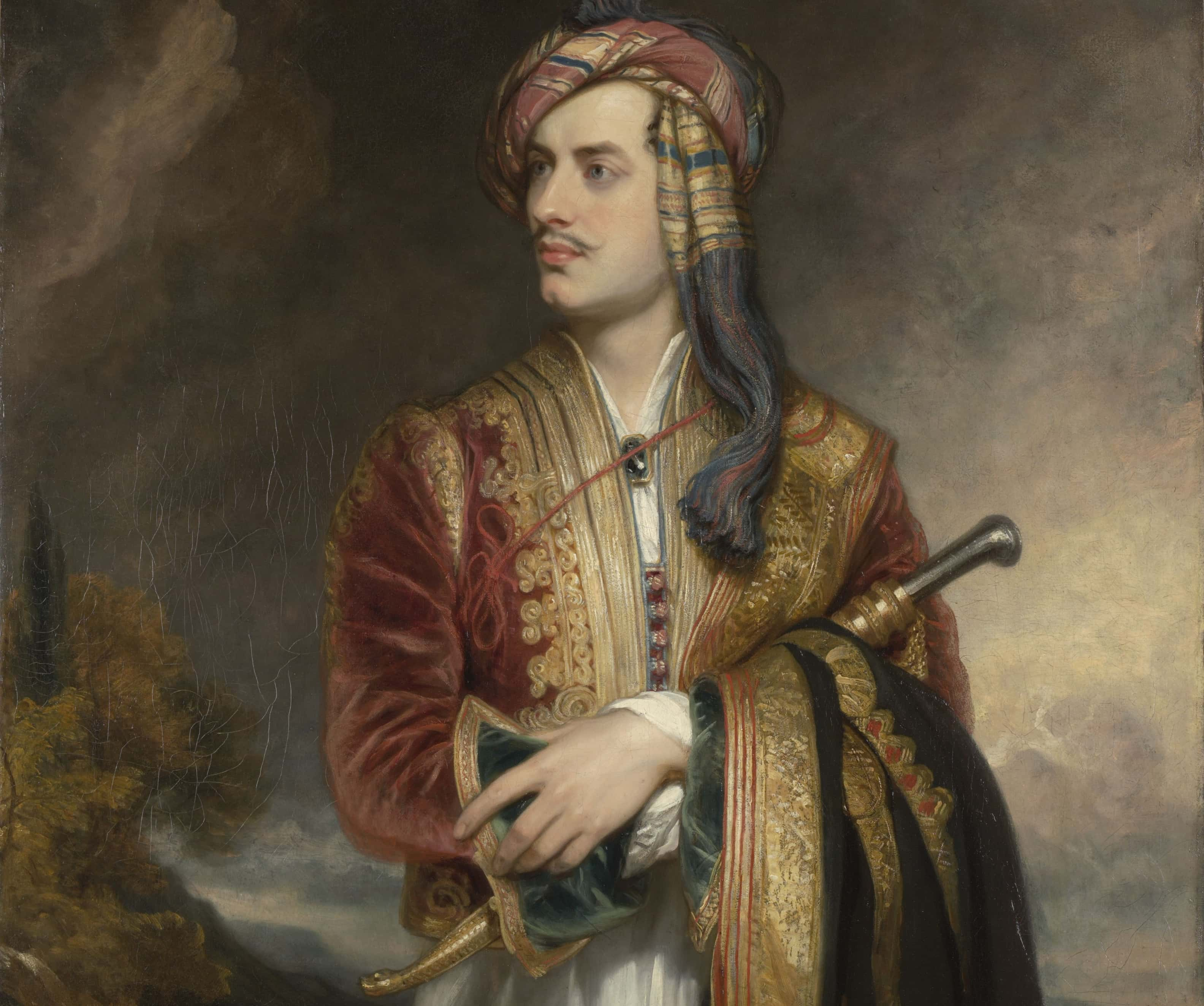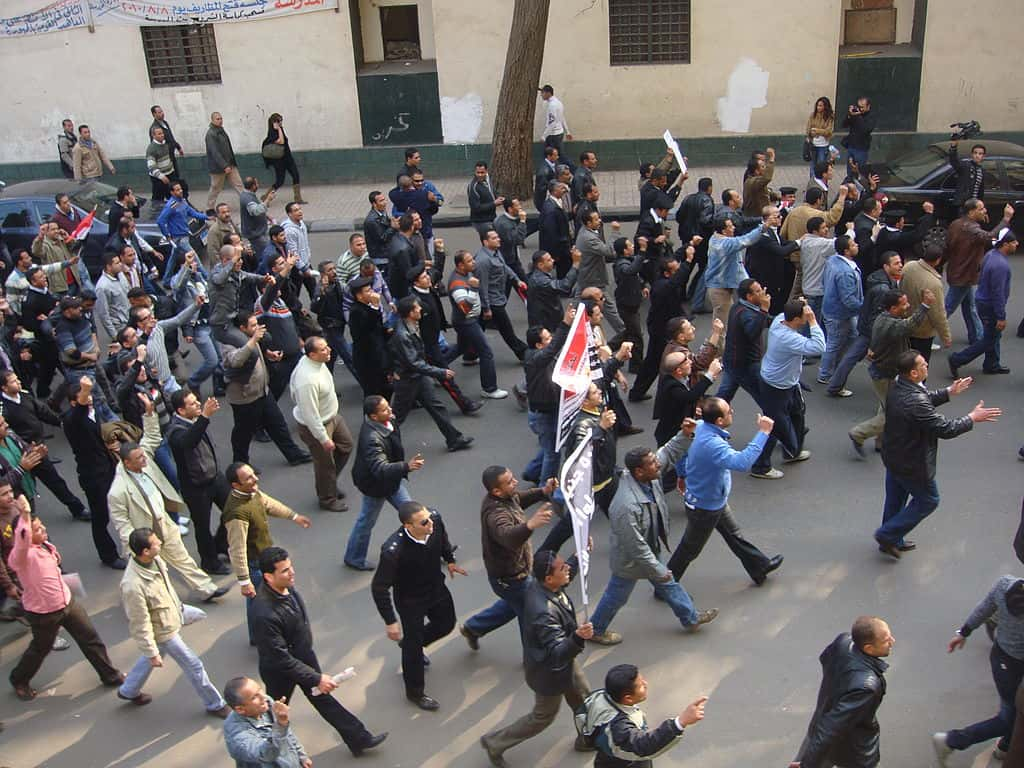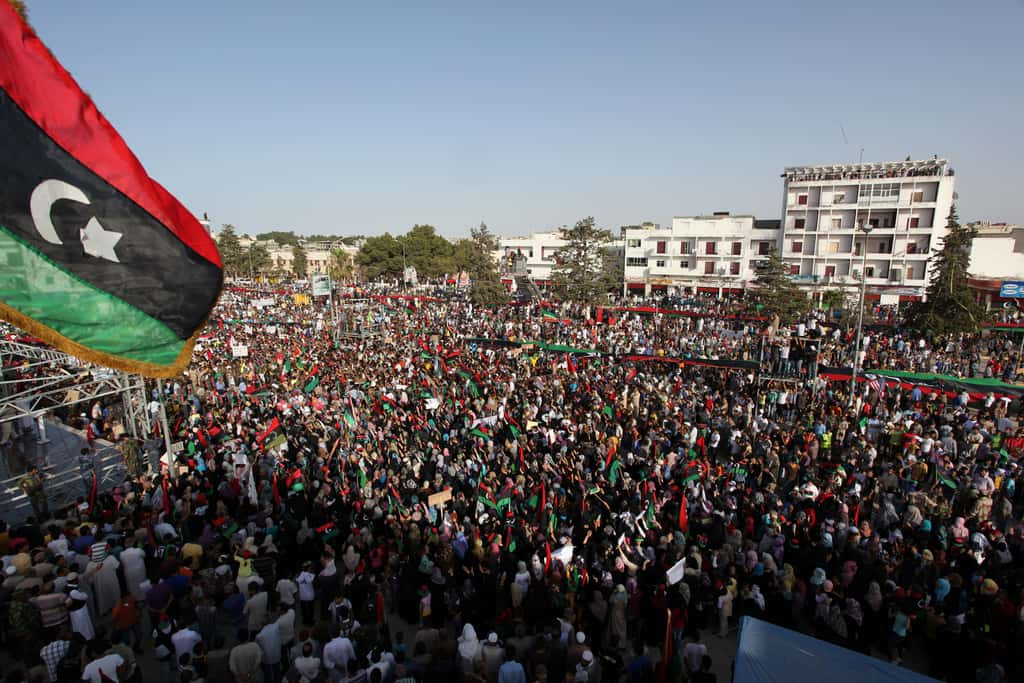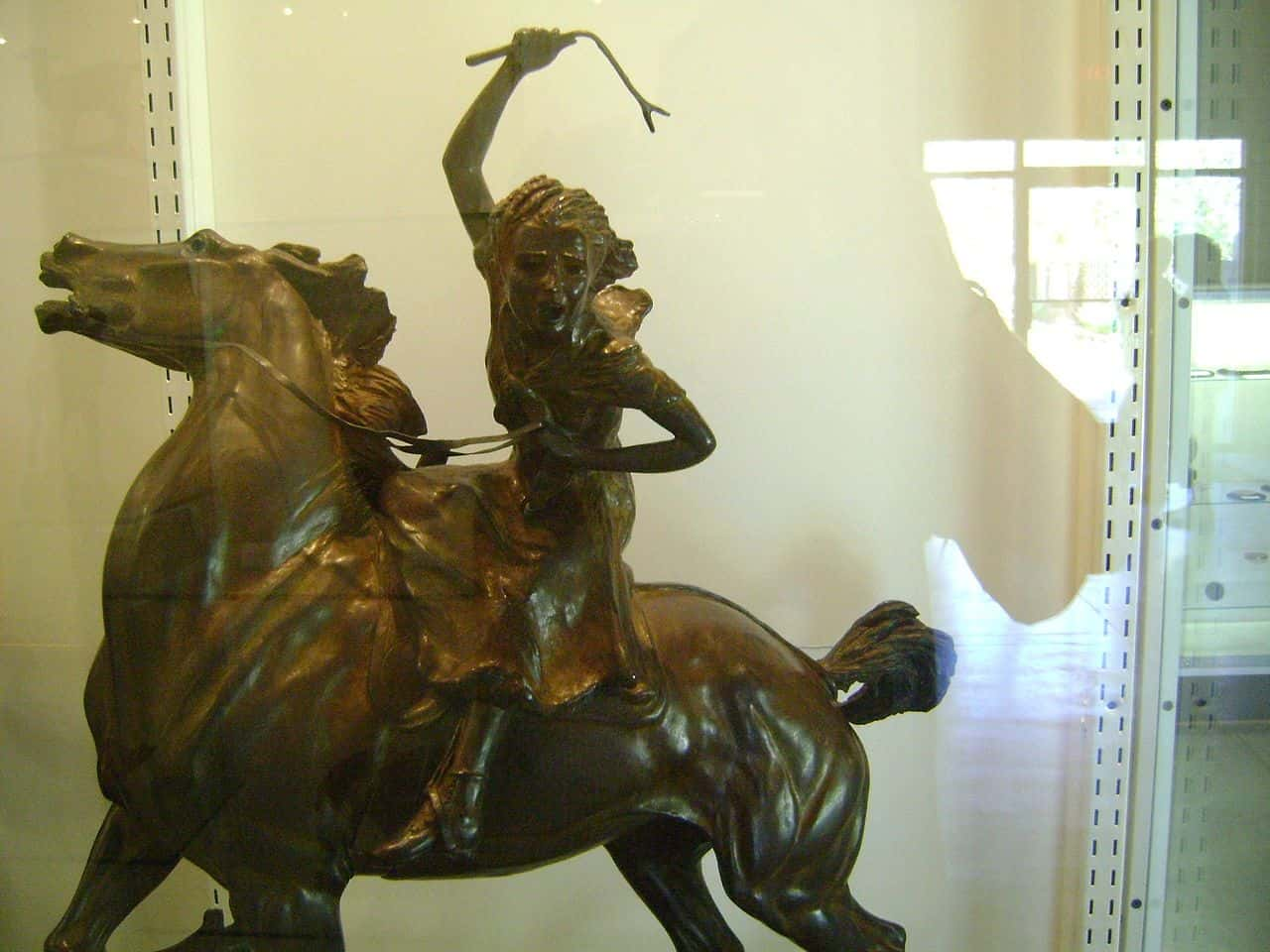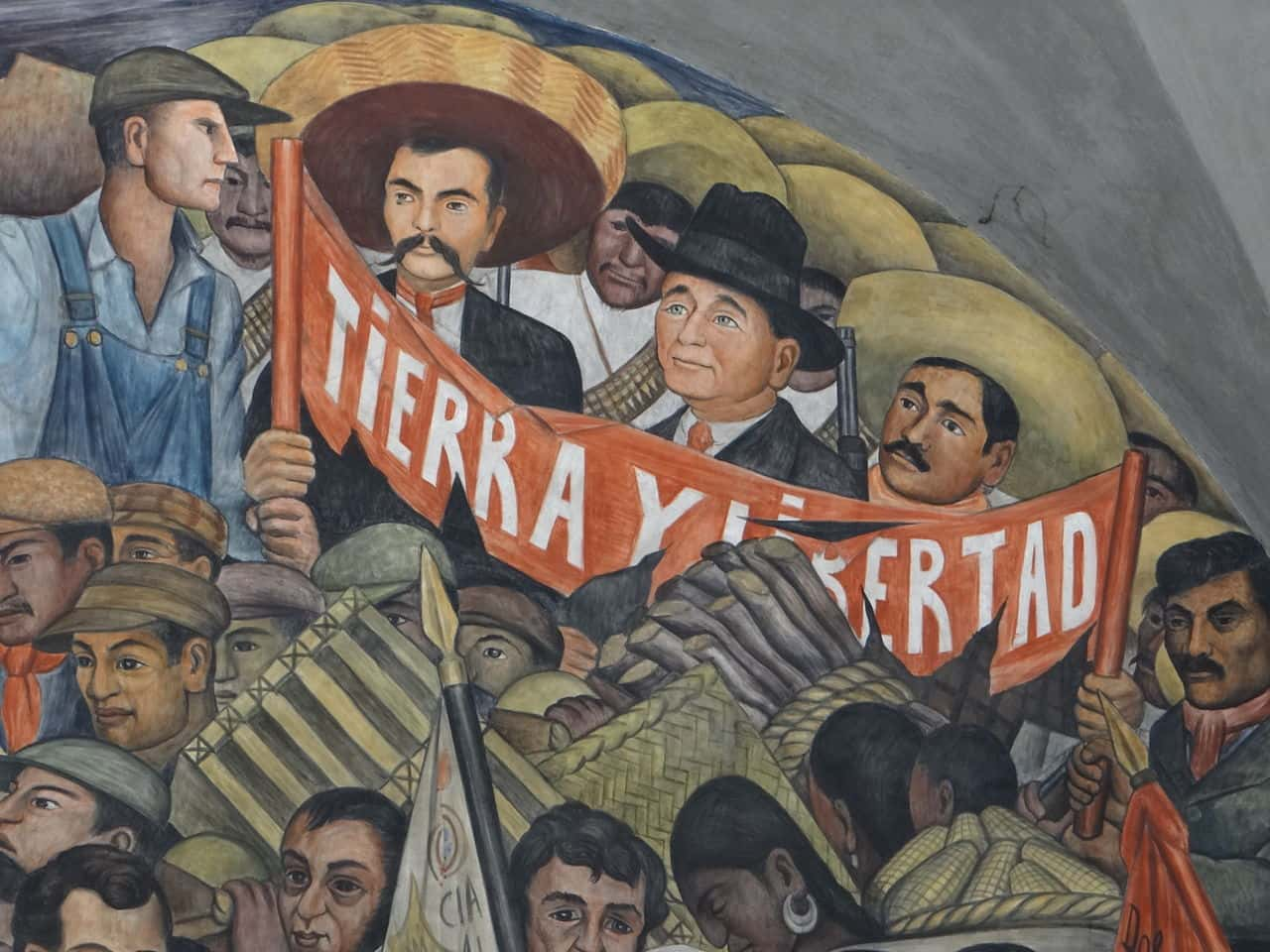Revolution is a part of life. The term itself means nothing more than “a rotation"—a fitting term for a phenomenon that's been shaping world history since time immemorial.
Revolutions take place over time as systems of power pervert the social order. If history has taught us anything, it's that the abuse of power is hardly rare. Such systemic oppression can continue unchecked for decades... but when the displeasure of the people hits critical mass, a revolution is inevitable. And whether they're violent or peaceful, the power of revolution seems as fundamental to human life as the rotation of the Earth.
Here are 40 revelatory facts about revolutions from history.
Revolutions Facts
40. Going Commando
French revolutionaries were known as the "sans-culottes." The literal translation? Without underpants. That's not to say that they were going commando, though. It's just that the nobility tended to wear silk short pants called culottes (classic aristocrats, right?) In contrast, the revolutionaries wore long, tight pants to identify themselves.
39. Greek Brotherhood
One of history’s overlooked uprisings is the Greek Revolution, which raged for 11 years between 1821 and 1832.
For four centuries Greece had been under Ottoman control, even before they took Constantinople. And while conspiracy theories tend to get our eyes rolling, this was a case of genuine plotting. A secret society called the Filiki Eteria helped to launch revolts across the country and liberate Greece for the Ottomans.
38. Birth of Capitalism
The most influential revolution of our times wasn’t an overthrow of a government, but rather the Industrial Revolution, which transformed the entire world and is responsible for introducing modern capitalism.
37. Unity Makes Strength
The Haitian Revolution of 1791 had some unexpected help. When the uprising got started, French colonists hired mercenaries from Poland to aid them in quelling the rebellion. However, once they arrived, many of the Polish soldiers switched sides and instead fought with the Haitians. After the war, these soldiers, for the most part, stayed on the island and created families. Hence the surprisingly large population of ethnic Poles on the island.
36. Hold Your Keys Up
Keys can mean many different things, and for the people of Czechoslovakia, keys symbolized the opening of democracy in their country. During the Velvet Revolution, which was a peaceful overthrow of their corrupt Iron Curtain country, demonstrators took to the streets and jangled their keys in the air, ringing in a new era of democracy to Eastern Europe.
35. Seasons of the Nations
The Autumn of Nations occurred in 1989, when the countries of Central and European Europe overthrew their communist governments in a peaceful manner and led the shift to democracy across the region. Well, except for Romania, where there was violence. This was in contrast to the Spring of Nations in 1848, when Europe underwent violent upheavals of their political institutions and regimes throughout the entire continent.
34. Take Out The Leader
One of Fidel Castro’s most successful tactics in the Cuban Revolution was his use of snipers to demoralize his enemies and put them on psychological tilt. Whenever a group of President Batista’s soldiers was advancing on rebel bases, Castro had his snipers kill the leading man. This led to no soldiers wanting to walk in front, as it was considered suicidal, and kept them from searching for the rebels.
33. An Actual Quiet Revolution
Referendums and free elections aren’t usually synonymous with revolutions, but after Francisco Franco died, Spain was able to peacefully transition into democracy through institutional arrangements without any actual attacks on their institutions.
32. A Poetic Demise
Because of the influence of ancient Greek culture on Europe, much of the continent sympathized with Greece’s rebellion against the Ottomans, and some even left their homeland to help the Greek cause. One such figure was Lord Byron, who spent time on the battlefields and went on to die in Greece during their revolution.

Sign up to our newsletter.
History’s most fascinating stories and darkest secrets, delivered to your inbox daily. Making distraction rewarding since 2017.
31. About That Whole Freedom Thing
African-American slaves served on both sides of the Revolutionary War. Some ran away from their masters and joined the British in order to fight against the slave owners, while others were recruited by the American Army after George Washington lifted the ban which had originally prevented them from doing so. In reward for serving in the Army, slaves were promised their freedom afterward, however many of them were simply sent back to their masters afterward.
30. About That Revolution
Just because the Philippines had a revolution and declared their independence doesn’t mean that it actually worked out in the end. Instead, the Spanish conceded to the United States that they could now go in and take over, which is exactly what the US did, ruling for 50 years in the country that had just won their independence.
29. Proxy War
Sometimes a revolution isn’t just from within but is facilitated by external sources, as was the case of the Nicaraguan Revolution between 1962 and 1980, when the country was actually a battleground for a proxy war between the Soviets and Americans during the Cold War.
28. Spy Lady
The Culper Ring was the spy network of colonists that aided the Americans during the Revolutionary War and played a pivotal role. The ring was able to discover the treason of Benedict Arnold due to the efforts of Agent 335, one of the most famous, yet still anonymous spies of the ring. The number 335 is decoded to mean Lady, so all that we know is that the Agent was a woman living in New York City, with a high degree of social prominence.
27. The Legend of Valley Forge
The Battle of Valley Forge is in the pantheon of American folklore due to the lessons taught in schools and history books depicting soldiers braving out a brutal winter in rags, starving and freezing to death, all in loyalty to the cause of the American Revolution. However, archaeological digs now show that there are no grave sites in Valley Forge, and historians date the legend of Valley Forge to the 19th century. In reality, the American troops weren’t the ragtag team that we’ve been led to believe they were.
26. Living Together
When many people look at the Middle East, they believe that the factions of religions there are always at each other's throats. However, this is a huge misconception, as most of the populations there are peaceful. During the Egyptian Revolution of 2011, Muslims, Christians, Coptic Christians, and secular Egyptians all had each other’s back and maintained solidarity. Many Christian protesters even formed human shields around Islamic people to protect them while they prayed.
25. The Hand of Egypt
The Military had a hairy role in the Egyptian Revolution, as they are responsible for the disappearance of thousands of people, and an estimated 1,200 deaths. Documents show that they rounded people up, tortured them, and had mass executions of prisoners during the Revolution and its aftermath.
24. Social Media Help
The Arab Spring and it’s subsequent revolutions used the internet as a way to help them stir up support for political changes in their region. Social media sites like Facebook and Twitter were vital to their efforts, as they were used to organize and lead a revolt against their corrupt governments.
23. Google It
Libya didn’t just rely on social media, however, as the rebels there turned to Google Earth to help them fight against Muammar Gaddafi. They would store their locations on Google Earth, and then send them to NATO so that they could then direct airstrikes to the pinned locations.
22. Call of Libya
Libyan rebels didn’t just use Google Earth. They leaned on the video game Call of Duty for their tactical approach to rebellion. according to sources, the game was their first and most vital resource of military knowledge.
21. You Are What You Eat
The Americans had a height advantage of more than several inches when they fought the Revolutionary War against the British. This is attributed to the development of a healthier lifestyle than the British, as the lands of the Americas were full of healthy soil for vegetation and plenty of lands to keep grazing animals.
20. Not So Bloodless
The Glorious Revolution of 1688 set up the Bill of Rights in Britain and cleared the way for parliamentary democracy in the country. It is often referred to as the Bloodless Revolution, however, this is a misnomer. There were violent clashes in England and Scotland, as well as major battles in Ireland, as well as anti-Catholic riots going on throughout.
19. Dutch Invasion
Actually, the Glorious Revolution is now looked at by historians as a successful invasion by the Dutch and William of Orange. This had been overlooked until the 1990s, due to an Anglo-centric approach by most scholars, who could not and did not consult the Dutch records at the time.
18. Further Than Revere
Paul Revere, Paul Revere—yeah, we’ve all heard about all he did to warn the Americans that the British were coming, but what about Sybil Ludington? Revere rode for 20 miles with others, and eventually was captured, but two years later 16-year-old Ludington took off by herself in the middle of the night for 40 miles, in outlaw territory, to raise American troops to join the Battle of Danbury.
17. Cheers…?
Making a toast in Hungary might be the best idea if you’re visiting Budapest this summer. In 1848, Hungary launched the Hungarian Revolution against the Austrians, which ultimately failed. The Austrians celebrated exactly how you’d expect Austrians to celebrate, by making a cheers, drinking some beer, and executing all of the Hungarian generals.
16. Largest Death Toll
The Taiping Rebellion is responsible for the highest amount of humans lost during a revolution, as the average estimation of deaths is 22,360,680, while other estimations suggest the toll to be closer to 100 million people.
15. Girl Troubles
Emiliano Zapata, the leader of the peasant revolution in the state of Morelos and facilitator of the Mexican Revolution, is said to have first gotten involved in the revolutionary struggle in Mexico after stealing a girl.
14. Robin Hood Zapata
Zapata believed in land reform, and his movement was led under the slogan of Tierra y Libertad (Land and Liberty.) Zapatistas believed that land does not belong to those disconnected from it, but rather it should belong to those who work on it. This led his Guerrilla Army of peasants to go on a crusade of taking land from the wealthy and redistributing it back to the poor.
13. True Quote Origins
By now we’ve all heard the quote of “I’d rather die on my feet, than live on my knees,” but do you know who said it? It has been attributed to many different leaders, from Che Guevara to Aeschylus, however, it actually comes from Emiliano Zapata, who said “I prefer to die on my feet than live on my knees,” during the Mexican Revolution.
12. Leaders Felled
Revolution is a bloody business, and no matter your role in it, there is no guarantee that you’ll make it out alive. Just about every one of the major leaders of the Mexican Revolution was assassinated, as Emiliano Zapata, Pancho Villa, Francisco Madero, Victoriano Huerta, and Alvaro Obregon all met the same fate.
11. Helping Hand
American soldiers of the American Revolution weren’t trained in using the bayonet and instead resorted to using the swords at the end of their guns as skewers for cooking meat over open fires. It wasn’t until the training of Prussian General Friedrich Wilhelm von Steuben that the American Army was able to properly wield the bayonet, which made them into an unstoppable force.
10. Native Enemies
Because the Native American Seneca tribe allied with the British during the American Revolutionary War, after the British defeat they were forced to give up their territories to the newly created United States of America. They fought alongside the Iroquois, who made up an even bigger faction of the British allies.
9. Frontier to Tribe
While the Seneca were negotiating the sale of their land, Mary Jemison proved to be a vital negotiator. She was an American frontierswoman who assimilated into the tribe after being captured as a teenager, and refused to return back to colonial culture as she got older.
8. French Casualties
While it may seem hard to believe, considering it was the American Revolutionary War, the French actually lost more troops than the Americans in battle.
7. German Recruits
As joining the Army was an undesirable profession in Britain, they had to recruit outside mercenaries to aid their fight in their war with America. First, they failed at securing 20,000 mercenaries from Russia and later had to negotiate treaties with various German states in order to procure mercenary troops from them. It didn’t help that they didn’t have any major allies.
6. Jasmine Flowers
Tunisia’s part in the Arab Spring was the Jasmine Revolution, named after their national flower. The revolution was triggered after a 28-year-old fruit and vegetable vendor by the name of Mohamed “Basboose” Bouazizi showed up at the door to the city hall in his city and lit himself on fire in protest of Tunisia’s corrupt police state.
5. Faith, Hope, Charity, Revolution
Another secret society that facilitated a revolution was the Katipunan, a Filipino nationalist organization created by a group of Freemasons. They organized a massive amount of resistance to the Spanish, and after they abandoned their secrecy, they were able to steer the Philippine Revolutionary Army to victory over the Spanish in 1898. They also signed all of their documents in blood. Oh, and they're known in the Philippines as the KKK.
4. Lightning Strikes
James Otis was an early Patriot advocate of revolution against the British, and he came up with the catchphrase of “Taxation without representation is tyranny,” which drove much of the war movement in the colonies. Otis died during the war in 1783 after being struck by lightning. That might sound like an awful way to go, but Otis had previously told his sister that he had hoped to go out by “a flash of lightning.”
3. Can’t Get The Shot Back
One of the biggest missed opportunities in the history of war happened during the American Revolution. The Revolutionary War saw some of the earliest forms of snipers being deployed in warfare, and at the Battle of Brandywine, British Captain Patrick Ferguson had an American officer in his sights, but he refused to pull the trigger, as the officer’s back was turned. Shortly afterward he regretted his decision, as he found out that officer was none other than General George Washington.
2. Brother of Christ
The leader of the Taiping Rebellion against the Qing Dynasty, Hong Xiuquan, launched his rebellion—which would end up as one of the bloodiest eras in the history of the world—after he came to the realization that he was the younger brother of Jesus Christ. He claimed to be the “Heavenly King,” sent to China to rid the country of devils.
1. Tear It Down
The Storming of the Bastille is the moment when the match hit the fuel in France, and the French Revolution was set in motion, but the moment takes on a new level of badass when you learn that the people tore down the fortress by hand, brick by brick, as they didn’t have any explosives on them.
Sources: 1, 2, 3, 4, 5, 6, 7, 8, 9, 10, 11, 12, 13, 14, 15, 16, 17, 18, 19, 20, 21, 22, 23, 24, 25, 26, 27, 28, 29, 30, 31, 32









